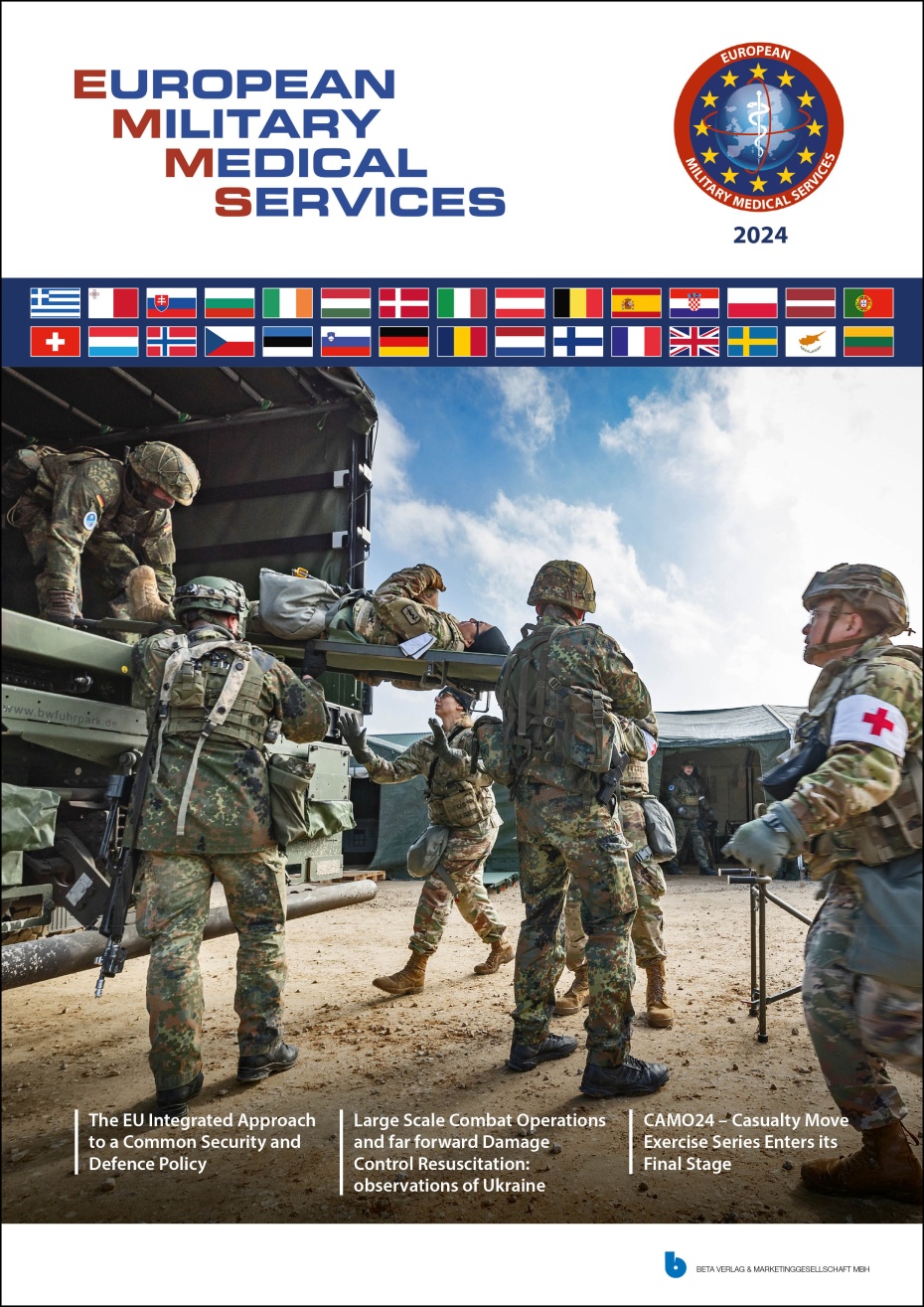European Military Medical Services

History teaches us that a government must have sufficient strength to guarantee the safety of its citizens and their well-being – not least their societal and socio-economic well-being – and must therefore ensure close partnerships to jointly tackle these security and socio-economic challenges. That is, by the way, the main raison d'être for alliances such as NATO and the EU.
But in order to develop that strength, every defence organization also has a rightful share to play in the form of its own deployment of updated military resources, and its government must therefore have the required military capabilities and budget.
It is therefore not without reason that, in the section ‘Defence Health and Society’ of the EUROPEAN MILITARY MEDICAL SERVICES (EMMS) magazine, we first give the floor to two strategists from the top management of the Belgian Defence. Their contribution is a reflection of the official opening speech delivered on November 13, 2023 at the 11th DiMiMED International Conference on Disaster and Military Medicine in Düsseldorf, Germany and gives us insights into why genuine societal support to security and defence is probably the much-needed investment we are still waiting for. The distinguished authors deal successively with concepts such as ‘Total Defence’, the need for greater societal resilience, civil-military interaction and cooperation and building a more sustainable operational reserve force and so to speak, anticipating for whole of government approach.
With the EMMS magazine, we try to provide a useful format for informing European defense health and health care practice and an easily accessible forum for promoting broad understanding in common areas of interest, not least in European military medical cooperation.
The magazine therefore delivers high-quality organizational and clinical content at the intersection of defence and security on the one hand and health policy and healthcare practice on the other, to a wide range of military healthcare professionals, medical officers, planners, executives etc. and the Euro-Atlantic military medical community as a whole.
The ‘Perspective’ section offers you among others an outlook on how the observations made in the war in Ukraine underline the necessity “to make available as quickly as possible the required and urgently needed resources for the Bundeswehr Joint Medical Service for the purpose of a balanced development of forces and responsible for the life and health of the soldiers entrusted to us”. This section also looks ahead to the added value of monitoring vital signs with the help of body sensors and how the subsequent transmission of critical health data enables the ‘digitalisation of the medical rescue chain’.
The EMMS magazine furthermore offers its readers an overview and update of current European cooperation initiatives in the field of military medicine with reports of joint European exercises and meetings and presentations of relevant institutions, such as for example military hospitals or government, and corporate entities.
The ‘Let’s get acquainted …’ section introduces you to the medical authorities within the European Union’s Military Staff and its subordinate Military Planning and Conduct Capability. You’ll explore the assignments, responsibilities and complementarities of their respective medical advisers and medical branch and learn how they shape defence health and healthcare as an enabling part of the European Union’s integrated approach to a “Common Security and Defence Policy”.
Since the EMMS magazine accepted to be the face of the “Multinational Medical Coordination Center–Europe” – the emanation of the almost logical merge of an EU PESCO project and a NATO FNC initiative – a significant number of contributions have traditionally come from the MMCC-E. Two interesting MMCC-E workshop reports deal with the challenges of the logistics of patient transit. One about CAMO24 is focusing on civilian-military cooperation regarding medical evacuation and the handover of patients from NATO back to the national healthcare systems, testing additionally the NATO Patient Flow Management Guideline for Article 5 Operations. The other reminds us that (intensive care–capable) ambulance trains are back from perhaps never being away, improving access to health care for war-affected patients. By the way, these findings are incidentally consistent with those of a recent scientific observational study from 2023 in JAMA Network Open suggesting indeed that medical evacuation by train can be feasible in a conflict zone with a preexisting railway network – in this case in Ukraine – if adapted to local conditions and an evolving patient population.
And so it is high time for clinical considerations in the ‘Clinical Practice in Military Medicine’ section of the EMMS magazine. Highlighting the revitalization of medical support capabilities as of paramount importance, a team of boots on the ground medics and physicians in Ukraine, led by John Quinn, discuss the most pressing emerging medical clinical challenges – especially in providing Damage Control Resuscitation with blood and blood products as a key focus – posed by the unique prehospital environment of the modern battlefield during Large-Scale Combat Operations as it shows up in Ukraine today. The review also presents dynamic solutions being used to counter them; especially with regard to the critical role of blood transfusion and Clinical Practice Guidelines in modern warfare and with an emphasis on the advancements in Tactical Combat Casualty Care and other adaptive and innovative medical approaches adopted in Ukraine.
weitere Ausgaben von EUROPEAN MILITARY MEDICAL SERVICES
mehr Informationen & Mediadaten zu EUROPEAN MILITARY MEDICAL SERVICES